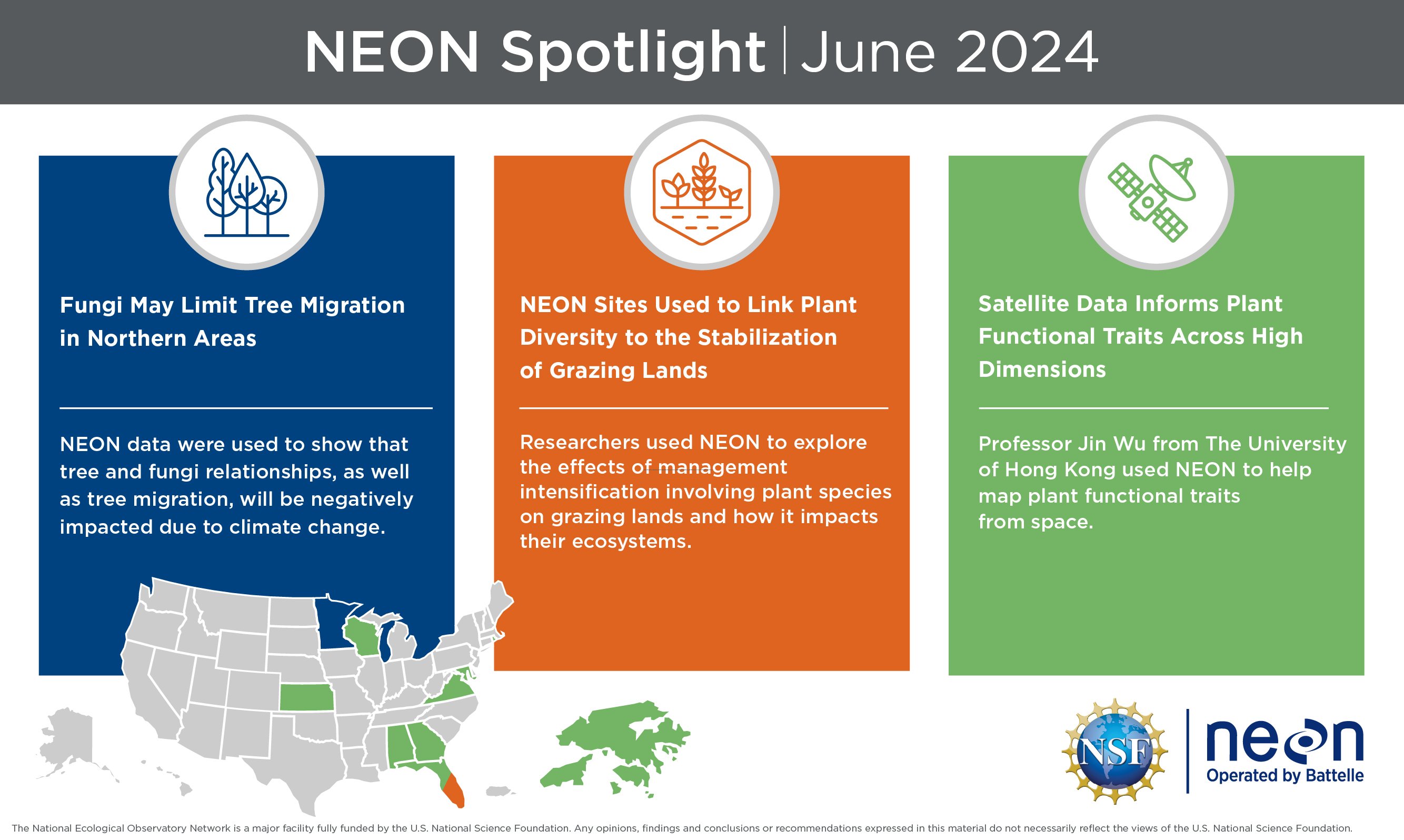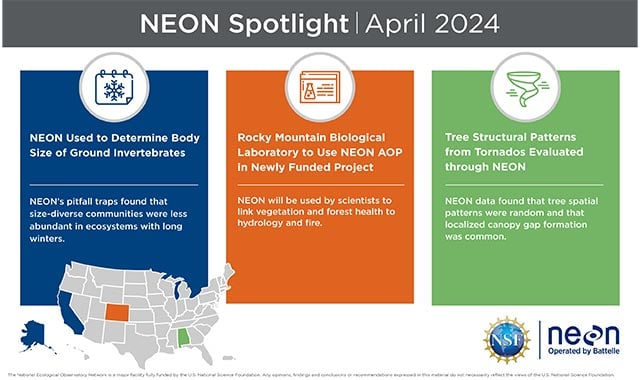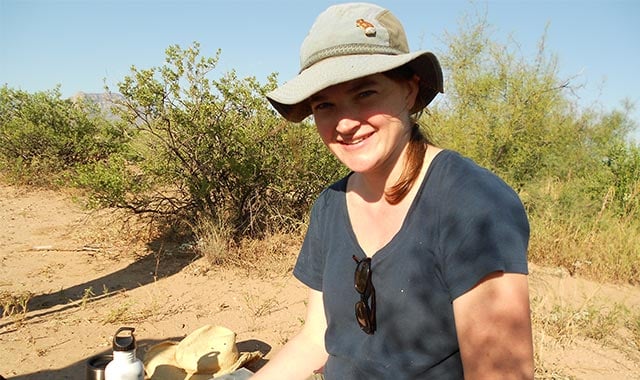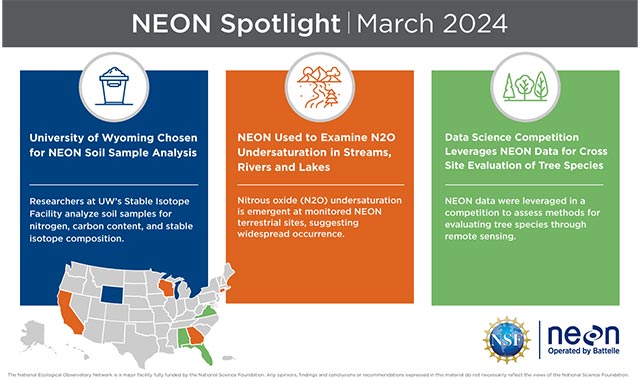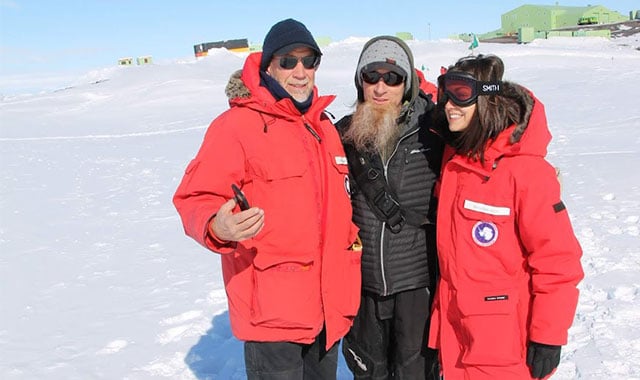February 2024: What’s New with NEON?
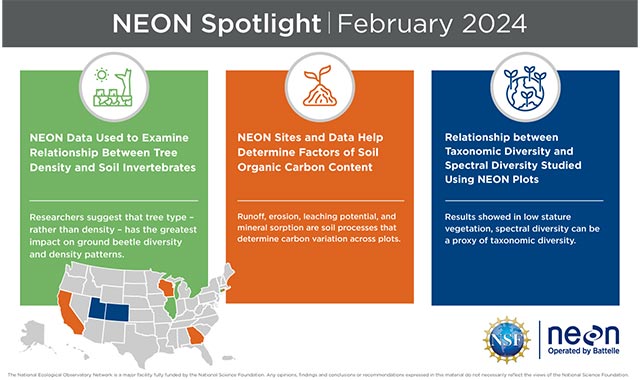
February’s NEON Spotlight highlights three stories demonstrating how scientists are leveraging NEON in their efforts to expand the capabilities of ecological science. This month, we are spotlighting how NEON data are used to understand the relationship between tree density and soil invertebrate populations, determine factors of soil organic carbon content, and identify a correlation between taxonomic diversity and spectral diversity. NEON continues to be instrumental in advancing our comprehension of the natural world, fueling public knowledge, and sharpening our ability to address pressing environmental challenges.
This Month’s Spotlight
The latest news from NEON includes:
NEON Data Used to Examine Relationship Between Tree Density and Soil Invertebrates
Researchers used NEON long-term ground beetle and vegetation records to determine the relationship between tree vegetation metrics and ground beetle diversity, density, and community composition across forests in North America. Between 2014-2019, NEON staff collected a total of 14,056 individual ground beetles spanning 103 species from four forest sites; the researchers used these data in their study. They found that the number of evergreen trees, specifically, strongly affects ground beetle density and community composition, and that one particular strand of evergreen is correlated to lower density of ground beetles than other tree types examined. The study suggests strong relationships between tree leaf habit and ground beetle community density and composition, and may also help scientists to better understand plant-soil interactions.NEON Sites and Data Help Determine Factors of Soil Organic Carbon Content
In this study, researchers used NEON soil data to estimate Soil Organic Carbon (SOC) change and its effects over 30 years. Scientists modeled SOC concentrations in topsoil and subsoil across NEON sites, taking into account soil type and potential land-use changes. Their results suggest that runoff and erosion, leaching potential, and mineral sorption are dominant factors that impact SOC across NEON soil plots. They also found that over 30 years, SOC does not change significantly when converting the observed natural vegetation to disturbed natural vegetation. Soil type also affects the results; types such as ultisols, spodosols, and inceptisols skewed toward an accumulation of SOC, as opposed to with andisols and aridisols where there is a loss of SOC.Relationship between Taxonomic Diversity and Spectral Diversity Studied Using NEON Plots
Nine herbaceous field sites and remote sensing data from NEON were used by scientists to explore the relationship between spectral and taxonomic diversity. Three biological characteristics and their influence were studied: vegetation density, spatial species turnover, and invasion by non-native species. The researchers found that spectral diversity – from NEON Airborne Observation Platform data – is strongly correlated to taxonomic diversity in sites with high species turnover and low invasion. Vegetation density has no impact on the relationship. While there is a correlation between taxonomic diversity and spectral diversity, it does not mean necessarily that species richness is represented by spectral diversity. Examining these diversity patterns is important as they impact restoration and management of our wild and changing ecosystems.
Sponsored by the National Science Foundation (NSF) and operated by Battelle, NEON is a continental-scale ecological observatory network dedicated to providing high-quality, consistently generated, standardized data that are free and available to all users. By enabling scientists, researchers, and students to address critical questions and understand ecosystem changes over time, the NEON program allows the ecological community to tackle questions and problems at a scale that was not possible before.
Related Blogs
BATTELLE UPDATES
Receive updates from Battelle for an all-access pass to the incredible work of Battelle researchers.
